Featured
- Reset filters
- 28 results
- (-) Rwanda
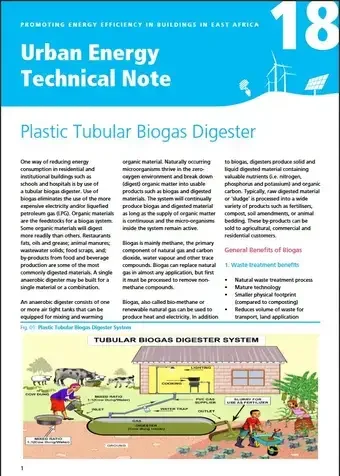
Brief
Urban Energy Technical Note 18: Plastic Tubular Biogas Digester
2015
One way of reducing energy consumption in residential and institutional buildings such as schools and hospitals is by use of a tubular biogas digester. Use of biogas eliminates the use of the more expensive electricity and/or liquefied petroleum gas (LPG). Organic materials are the feedstocks for a biogas system. Some organic materials will digest more readily than others. Restaurants fats, oils and grease; animal manures; wastewater solids; food scraps, and; by-products from food and beverage…
Read now
Learn more
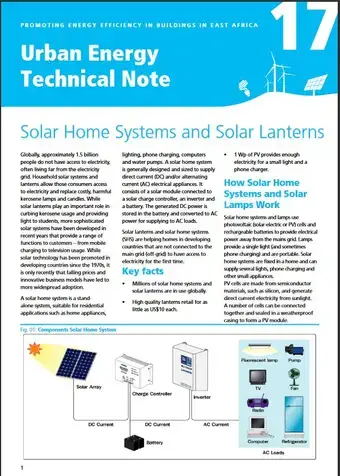
Brief
Urban Energy Technical Note 17: Solar Home Systems and Solar Lanterns
2015
Globally, approximately 1.5 billion people do not have access to electricity, often living far from the electricity grid. Household solar systems and lanterns allow those consumers access to electricity and replace costly, harmful kerosene lamps and candles. While solar lanterns play an important role in curbing kerosene usage and providing light to students, more sophisticated solar systems have been developed in recent years that provide a range of functions to customers – from mobile…
Read now
Learn more
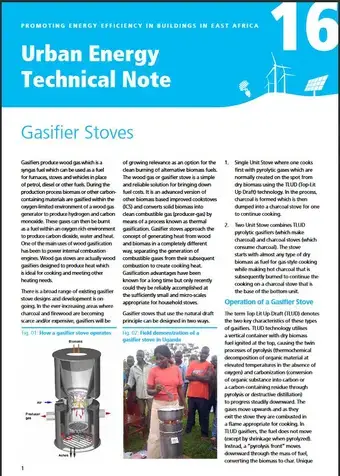
Brief
Urban Energy Technical Note 16: Gasifier Stoves
2015
Gasifiers produce wood gas which is a syngas fuel which can be used as a fuel for furnaces, stoves and vehicles in place of petrol, diesel or other fuels. During the production process biomass or other carbon-containing materials are gasified within the oxygen-limited environment of a wood gas generator to produce hydrogen and carbon monoxide. These gases can then be burnt as a fuel within an oxygen rich environment to produce carbon dioxide, water and heat. One of the main uses of wood…
Read now
Learn more
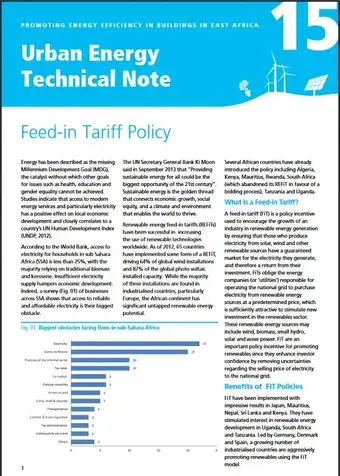
Brief
Urban Energy Technical Note 15: Feed-in Tariff Policy
2015
Energy has been described as the missing Millennium Development Goal (MDG), the catalyst without which other goals for issues such as health, education and gender equality cannot be achieved. Studies indicate that access to modern energy services and particularly electricity has a positive effect on local economic development and closely correlates to a country’s UN Human Development Index (UNDP, 2012).
Read now
Learn more
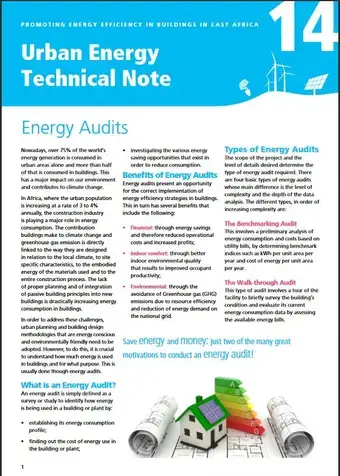
Brief
Urban Energy Technical Note 14: Energy Audits
2015
Nowadays, over 75% of the world’s energy generation is consumed in urban areas alone and more than half of that is consumed in buildings. This has a major impact on our environment and contributes to climate change.
Read now
Learn more
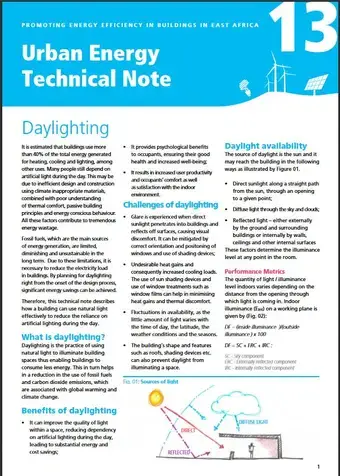
Brief
Urban Energy Technical Note 13: Daylighting
2015
It is estimated that buildings use more than 40% of the total energy generated for heating, cooling and lighting, among other uses. Many people still depend on artificial light during the day. This may be due to inefficient design and construction using climate inappropriate materials, combined with poor understanding of thermal comfort, passive building principles and energy conscious behaviour. All these factors contribute to tremendous energy wastage.
Read now
Learn more
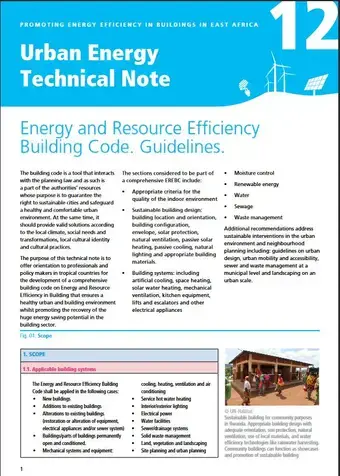
Brief
Urban Energy Technical Note 12: Energy and Resource Efficiency Building Code. Guidelines
2015
The building code is a tool that interacts with the planning law and as such is a part of the authorities’ resources whose purpose is to guarantee the right to sustainable cities and safeguard a healthy and comfortable urban environment. At the same time, it should provide valid solutions according to the local climate, social needs and transformations, local cultural identity and cultural practices.
Read now
Learn more
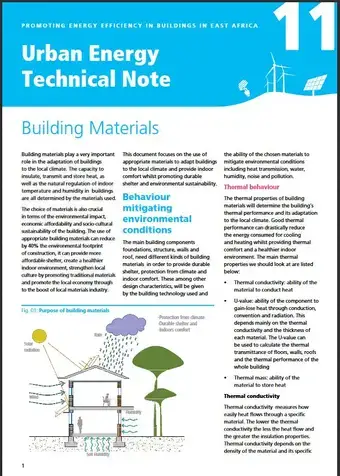
Brief
Urban Energy Technical Note 11: Building Materials
2015
Building materials play a very important role in the adaptation of buildings to the local climate. The capacity to insulate, transmit and store heat, as well as the natural regulation of indoor temperature and humidity in buildings are all determined by the materials used.
Read now
Learn more
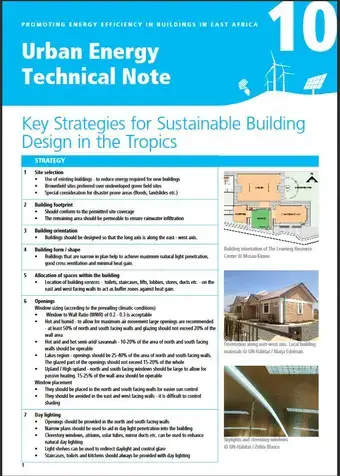
Brief
Urban Energy Technical Note 10: Key Strategies for Sustainable Building Design in the Tropics
2015
Document
Resolution on Equitable financing and effective monitoring of the implementation of resolutions adopted by the United Nations Habitat Assembly
Posted on April 29th, 2024
Read now
Document
Resolution on the creation of a human settlements resilience framework for early warning, foresight, risk reduction, crisis response and post crisis recovery and reconstruction
Posted on April 29th, 2024
Read now
Document
Resolution on Urban Planning and Sustainable Infrastructure
Posted on April 29th, 2024
Read now
Document
Resolution on Localization of the Sustainable Development Goals
Posted on April 29th, 2024
Read now
Document
Resolution on Enhancing the Interlinkage between Urbanization and Climate Change Resilience
Posted on April 29th, 2024
Read now
Document
Resolution on Biodiverse and Resilient Cities: mainstreaming biodiversity and ecosystem services into urban and territorial planning
Posted on April 29th, 2024
Read now
Document
Resolution on Accelerating the Transformation of Informal Settlements and Slums by 2030
Posted on April 29th, 2024
Read now